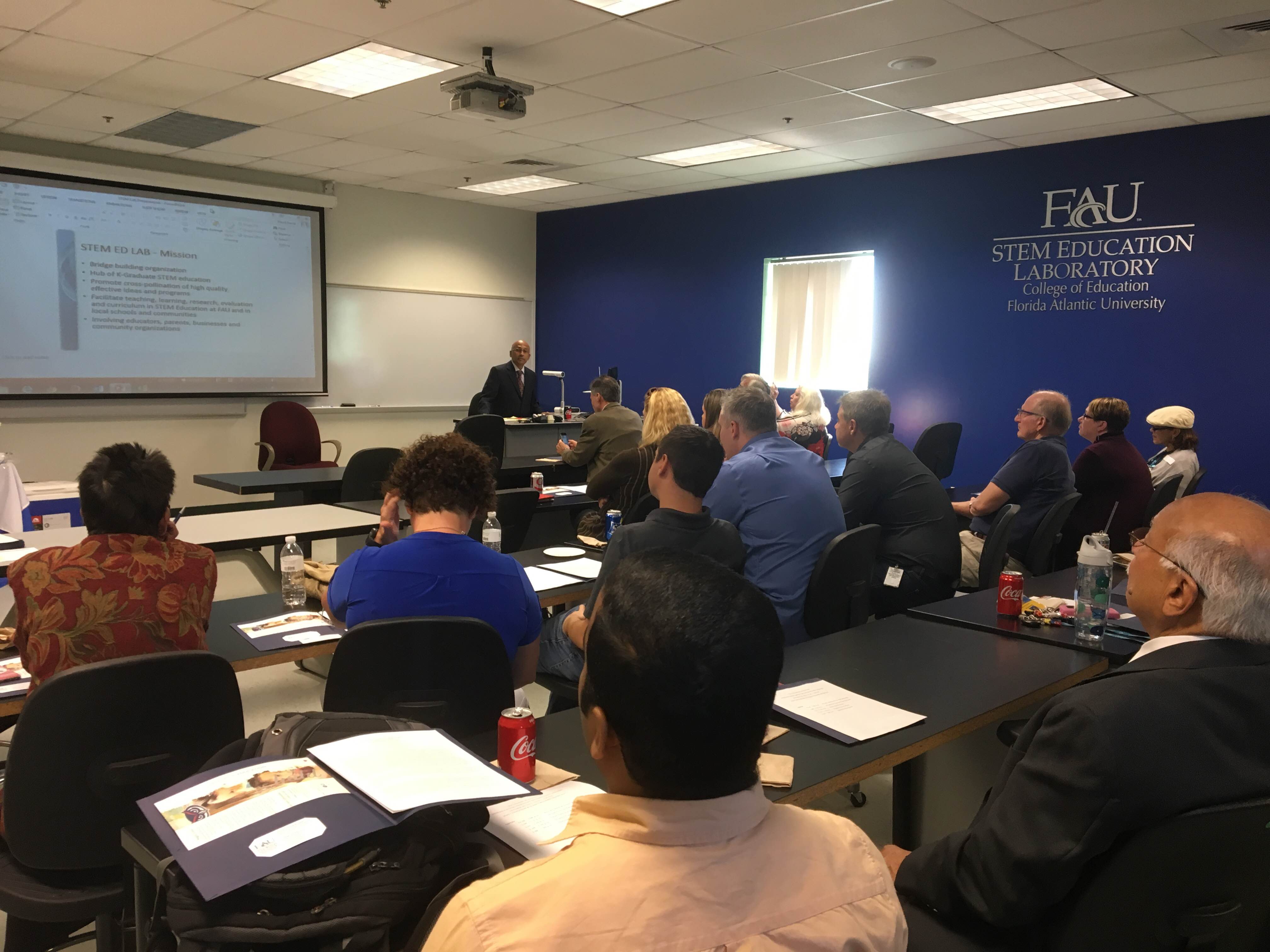STEM Education Laboratory
Director’s Message
Science, technology, engineering, and mathematics education, often referred to as STEM education, is a matter of national importance. In the 1950s, during the height of the Cold War, U.S. education felt threatened by the Soviet Union launching Sputnik. In 2025, about seven decades later, U.S. education still feels threatened, not necessarily by Russia, but by a lack of adequate education in STEM resulting in a workforce quite inadequate to compete successfully in a highly competitive global economy. The observation made by the Hart-Rudman Commission in 1999 that one of the “major problems faced by the education system is the insufficient number of students opting to enter science and technology fields—a shortage of personnel with technical skills already exists today in government, in the military, and in industries critical to national security” (n.p.) still holds true over two decades later.
 According to the Executive Office of the President, “Individual success in the 21st century economy is also increasingly dependent on STEM literacy; simply to function as an informed consumer and citizen in a world of increasingly sophisticated technology requires the ability to use digital devices and STEM skills such as evidence-based reasoning. The character of STEM education itself has been evolving from a set of overlapping disciplines into a more integrated and interdisciplinary approach to learning and skill development. This new approach includes the teaching of academic concepts through real-world applications and combines formal and informal learning in schools, the community, and the workplace. It seeks to impart skills such as critical thinking and problem solving along with soft skills such as cooperation and adaptability” (2018). STEM education involves the teaching and learning of concepts found in science, technology, engineering, and mathematics, from K through postgraduate levels. It should be noted that the STEM Education Lab recognizes that STEM overlaps with the arts, reading, social studies, architecture, nursing, medicine, etc.
According to the Executive Office of the President, “Individual success in the 21st century economy is also increasingly dependent on STEM literacy; simply to function as an informed consumer and citizen in a world of increasingly sophisticated technology requires the ability to use digital devices and STEM skills such as evidence-based reasoning. The character of STEM education itself has been evolving from a set of overlapping disciplines into a more integrated and interdisciplinary approach to learning and skill development. This new approach includes the teaching of academic concepts through real-world applications and combines formal and informal learning in schools, the community, and the workplace. It seeks to impart skills such as critical thinking and problem solving along with soft skills such as cooperation and adaptability” (2018). STEM education involves the teaching and learning of concepts found in science, technology, engineering, and mathematics, from K through postgraduate levels. It should be noted that the STEM Education Lab recognizes that STEM overlaps with the arts, reading, social studies, architecture, nursing, medicine, etc.
To improve STEM education, we must prioritize our efforts on changes that produce fruitful outcomes. Experience tells us that “reinventing the wheel” and maintaining the status quo may not be the right solution. Instead, we need to explore solutions that are feasible and productive in improving STEM education in our schools and colleges. It is imperative that practical solutions to problems facing STEM education are developed and implemented. The College of Education at Florida Atlantic University is strategically positioned to lead STEM education reform in South Florida.
Thank you.
David Devraj Kumar
